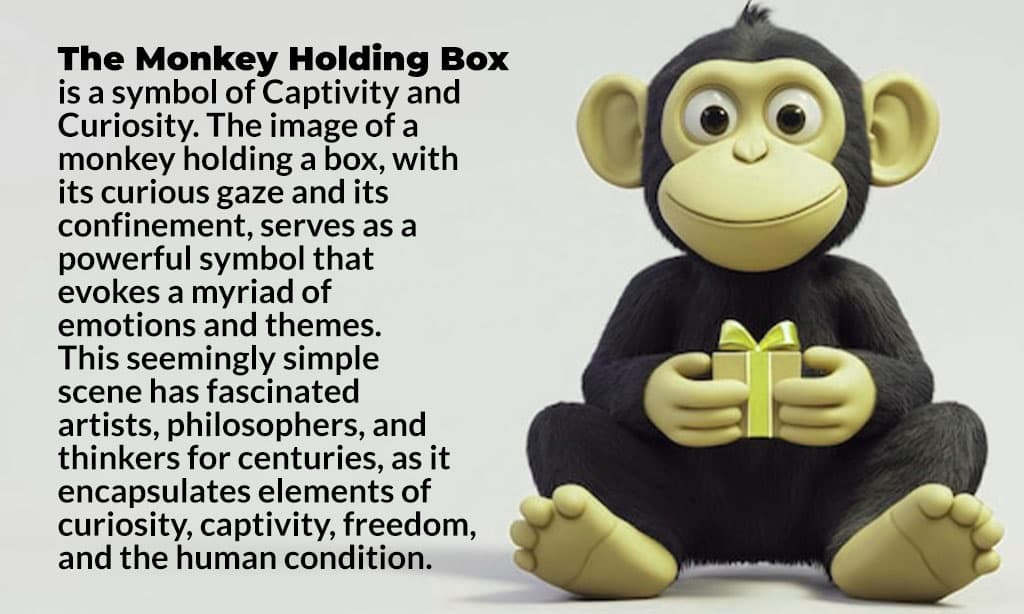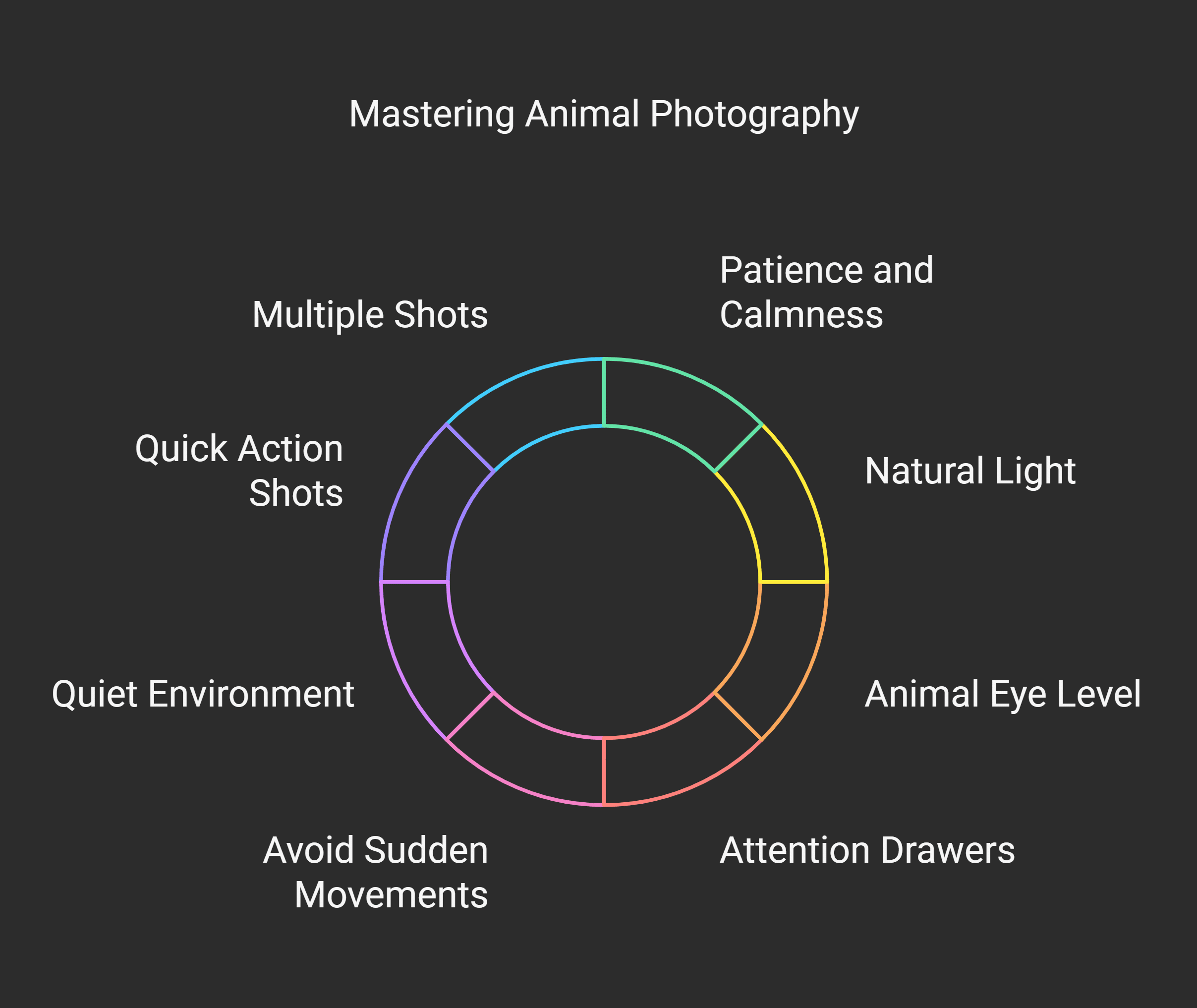Ever searched for “Monkey Holding A Box” and been surprised by the results? One viral image of a cute monkey clutching a box has captured hearts worldwide. This blog will explore why this sweet picture spread like wildfire and what it tells us about search engines.
Stay tuned, it’s worth your time!
Key Takeaways
- The image of a monkey holding a box gained viral attention for its charm and humor, with millions sharing it on social media.
- Search engines like Google displayed this picture often, sparking curiosity about algorithm biases.
- People created memes, art, and edits inspired by the image, adding to its popularity online.
- Ethical concerns arose about staged animal photos and algorithm flaws in search results.
- Stock photo sites and hashtags are great tools to find similar cute images quickly.
The Adorable Appeal of the Monkey Holding a Box
A tiny monkey holding a simple cardboard box—it’s hard not to smile. The image feels like pure mischief captured in one frame. Its wide-eyed stare, tiny hands gripping the box like it holds treasure, draws instant attention.
People adore animals doing “human-like” things, and this picture nails that charm perfectly. It feels both curious and innocent, making viewers connect right away.
Millions shared this on social media for its wholesome vibe. Who wouldn’t enjoy seeing such an odd yet adorable sight? From its playful nature to the sense of surprise when we see animals interact with items like boxes meant for humans—this mix drives interest fast.
Leading into why it went viral adds even more layers to unpack here!
Why This Image Went Viral
The image of the monkey holding a box spread like wildfire on social media. People fell in love with its charm, but there was more at play. Google searches for “monkey holding box” displayed this specific picture repeatedly, surprising many users.
The unexpected accuracy and humor behind it sparked curiosity and laughter.
News outlets jumped on the chance to cover this odd trend. Users began questioning search engine algorithms and their biases. Some wondered if machine learning had influenced these results unfairly.
Social media users shared memes, turning this adorable moment into viral gold overnight.
Creative Uses of the Image
The monkey holding a box has sparked endless creativity, inspiring fun memes, quirky edits, and even artistic spins—come explore how people brought this adorable image to life!
Memes and Social Media Trends
People turned the “monkey holding a box” image into hilarious memes. Users added witty captions, creating funny scenarios. Some joked it looked like the monkey had life’s biggest secrets in that box! Social media platforms flooded with edits daily, with thousands of likes and shares.
Search engines may have fueled its rise due to algorithmic biases. Viral trends often reflect how data sets influence search results unpredictably. This mix-up sparked intrigue and raised questions about accountability in digital content prioritization.
Artistic Interpretations
Artists have embraced the “monkey holding a box” image in creative ways. Some turn it into whimsical paintings, blending bright colors and playful themes. Digital design enthusiasts use this image to craft royalty-free stock illustrations and vectors, adding their artistic flair.
Others highlight deeper meanings through custom designs. They explore concepts like technology’s influence on art or stereotypes linked to algorithms. This mix of humor and critique captures attention while promoting thought-provoking discussions about biases in search results.
Where to Find Similar Cute Images
Google Image Search offers millions of royalty-free stock images daily. Searching for “monkey holding box” can lead to adorable results, thanks to its massive database and advanced algorithms.
Stock photo websites like Shutterstock or Adobe Stock allow downloads of high-quality images, including animals holding objects like cardboard boxes.
Social media platforms are goldmines for discovering cute animal pictures shared by users every day. TikTok videos or Instagram posts often feature playful moments captured in HD detail.
These platforms also promote trends with hashtags, making it easy to participate in finding similar content quickly.
Tips for Capturing Adorable Animal Moments
Finding cute images of animals online is great, but capturing your own can be even better. Here are some tips to help you snap the perfect adorable moment with any animal.
- Stay patient and calm while waiting for the right shot. Animals often move a lot, so give them time to relax around you.
- Use natural light since it makes photos look clearer and warmer. Early mornings or late afternoons work best because the sunlight is soft.
- Get down at their level to create engaging compositions. This angle shows details in their expressions and surroundings.
- Offer treats or toys to draw their attention toward the camera. A simple noise or motion may also catch their interest briefly.
- Avoid sudden movements that could scare them away. Sudden actions might ruin the moment, making animals uneasy.
- Select a quiet environment free from distractions or loud noises. Peaceful settings encourage animals to act naturally.
- Keep your camera ready for quick action shots if they jump, play, or interact with others.
- Shoot multiple pictures instead of focusing on one perfect frame. You’ll have more options later when choosing the best shot.
- Use tools like burst mode on cameras or smartphones for dynamic moments like running or climbing trees.
- Respect ethical boundaries by not forcing poses or causing discomfort for an image’s sake, ensuring both fun and safety during photography sessions!
Ethical Considerations in Sharing Animal Images
Sharing animal images seems harmless but can raise serious concerns. Algorithms used by search engines like Google sometimes show biased results, which may dehumanize or stereotype certain groups.
For instance, biases in training data can lead to unfair associations or exclusions that harm representation and diversity. Developers of such algorithms often lack diverse backgrounds themselves, which further adds blind spots to the system.
This underscores a larger problem—platforms must address these flaws to prevent ongoing damage.
Posting photos online also raises privacy and exploitation issues for wildlife. Animals in many “adorable” moments might face stress during staged shoots just to capture one viral shot.
Using royalty-free stock photos helps reduce this impact since the images are pre-approved and ethical standards are followed more closely. Users should think beyond their likes or shares before posting—a small step that prevents harm down the line while upholding respect for nature’s creatures!
Community Reactions to the Monkey Holding a Box
Social media exploded over the image of a monkey holding a box. Many users loved its cuteness, while others questioned how it became so popular online. News outlets didn’t hold back either, running stories about this quirky moment and digging into possible reasons behind its rise.
Some wondered if Google intentionally caused this mixup as an SEO stunt to draw attention.
Others saw it as an innocent mishap exposing algorithmic biases in search engines. The incident sparked important conversations about technology’s flaws and incidental consequences of algorithm-driven results.
Though Google stayed mostly silent, insiders hinted they were working on improving their search algorithms to prevent issues like this in the future. This curiosity led many to explore creative uses for cute stock images in HD formats next.
Takeaways
The image of a monkey holding a box is pure joy. It’s simple, it’s cute, and it brightens your day. Moments like these remind us how much charm animals bring to our lives. Whether for laughs or art, this picture has touched many hearts online.
Keep searching for more adorable gems—it’s worth the smile!
FAQs
1. What is the story behind the adorable monkey holding a box?
The image shows a cute monkey holding what looks like a cardboard box. It became popular online, sparking questions about how search engines display images and their underlying algorithms.
2. Why are people talking about this image?
Many were surprised to be greeted with this picture when searching for royalty-free images of monkeys or boxes. It sheds light on biases that influence search engine results and raises important questions about algorithmic development.
3. Are there other similar images available?
Yes, you can find thousands of new stock photos featuring animals, objects like cardboard boxes, and millions of other royalty-free HD images through various platforms.
4. How do algorithms affect what we see in searches?
Algorithms decide which pictures show up first based on factors like keywords and user behavior. However, they also have biases that can lead to surprising or even funny results—like this monkey image.
5. Does artificial intelligence play a role here?
Yes, artificial intelligence powers many search engines today by analyzing data to match queries with relevant content. But it’s not perfect; its limitations sometimes cause incidental consequences in how results appear.
6. What larger issue does this highlight?
This situation highlights significant challenges tied to algorithmic biases and their implications for fairness in search engine responses—a factor worth considering as technology grows more advanced every day!










































